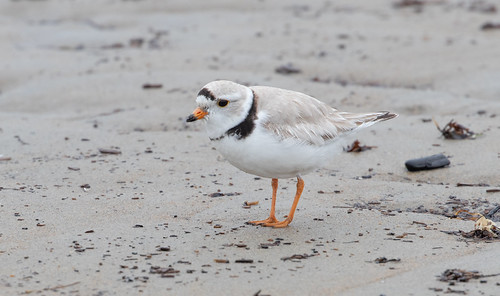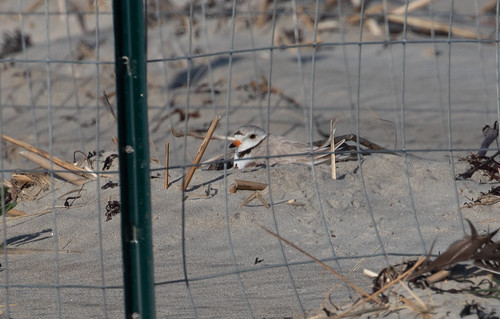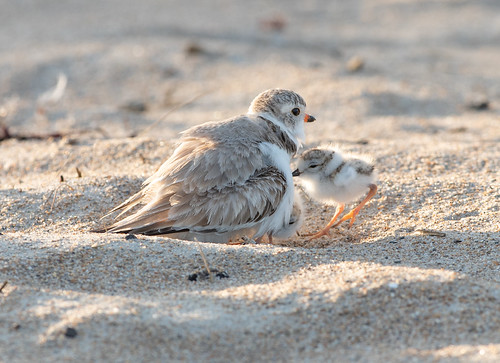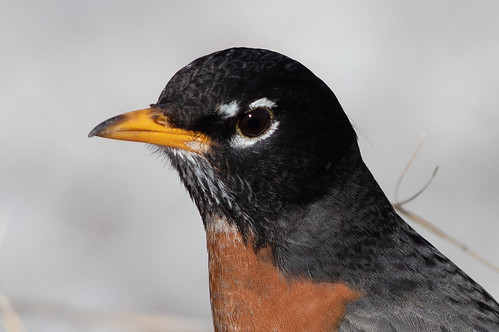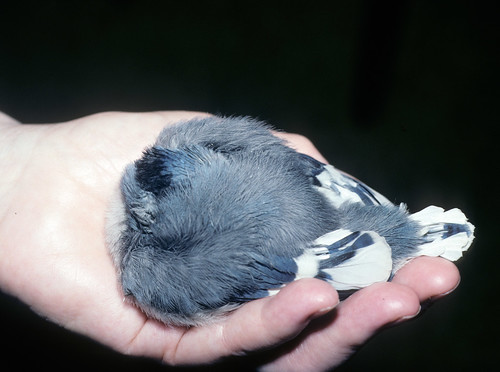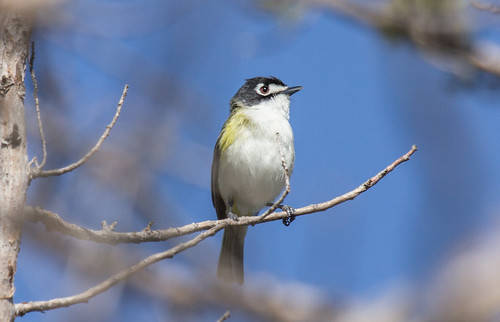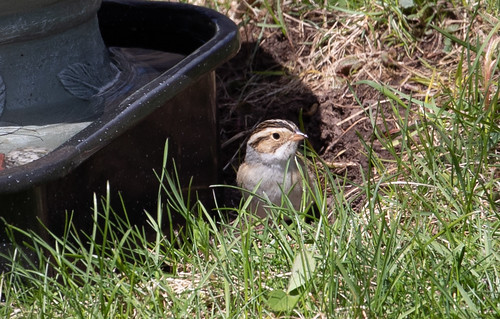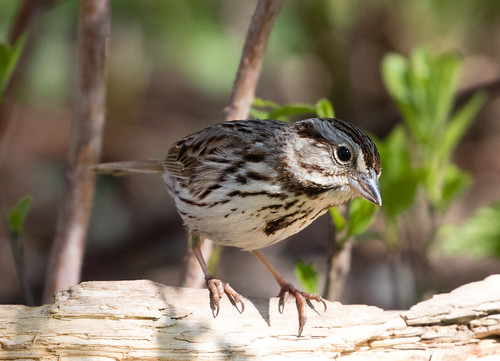Piping Plovers combing black, white, and brown in a most appealing package.
Last week I celebrated the wonderful news that record numbers of Piping Plovers are nesting in Maine and the famous plover pair, Monty and Rose, were nesting again on Montrose Beach in Chicago. One of the worst problems these wonderful birds suffer from is from dogs running off-leash on the beaches, but this year the birds will have an easier time, at least as long as beach closings continue. I have always been a dog lover, and I appreciate how much they love running, but during migration, when exhausted shorebirds desperately need to rest and feed in peace, and during nesting, keeping at least some swaths of sand beaches closed off entirely to dogs and keeping the public away from sensitive areas are critical to the survival of Piping Plovers and a lot of other shorebirds as well as terns and other vulnerable species.
Beaches are, of course, not the only habitats that provide critical resting and nesting habitat for vulnerable birds. I can’t say how many times over the years dogs have crashed through areas where I’ve been birding—this is endlessly frustrating, and even more galling when I’m near actual signs saying dogs must be leashed. I usually speak up about it, and depending on my own mood and what exactly a dog is disrupting, my Irish temper sometimes gets the best of me. Sometimes the dog owners blow me off or tell me to mind my own business. Sometimes they get huffy or downright belligerent. Birding alone as a woman, I’ve often felt a little fearful asking strangers to leash their dog. But never once, in all the years I’ve been doing this, has anyone ever threatened to call 911 on me—after all, they, not I, are the ones violating the law.
So I was horrified when I read about a well-known birder in New York City, Christian Cooper, having a terrible encounter with a scofflaw last week in Central Park’s wonderful Bramble. This quiet little birding spot is one of the few areas in the park with clear signs that dogs must be leashed at all times. Exhausted, hungry birds that find themselves in the big city after a long night’s migration may expend a lot of energy finding Central Park to begin with, and desperately need their rest. This gives birders a great chance to watch them, and is why birders fought hard to get the Bramble off-limits to off-leash dogs. So when a dog crashed through the undergrowth there last week and Christian Cooper politely asked the owner to leash it, her unwillingness was bad enough. As with a lot of dog people I’ve encountered, she was belligerent. But in this case, she was the one who called 911, lying that an African American man was threatening her!
I still can’t wrap my head around that. Again, this white woman was violating a clear rule in the park, and all he was doing was asking her to leash her dog, something I’ve done dozens of times without anyone ever threatening to call the cops, much less actually calling 911 and lying. She was clearly not afraid of him—she walked right up to him trying to cover his phone's camera, during a time of social distancing, no less!
It’s clear and obvious to anyone with open eyes that the police react differently when questioning a Black man versus a white one, so this woman was literally and knowingly putting his life in jeopardy. Fortunately, he recorded the entire incident. Even more fortunately, he left before the police arrived. We all have seen videos proving that Black people killed by police were innocent. Those videos never bring them back to life.
My friend J. Drew Lanham, who recorded some of his poetry for this podcast when his splendid book, Sparrow Envy, was published a few years ago (here's the blog link), has spoken out about the specific challenges of birding as a Black man for years. (His "Nine Rules for the Black Birdwatcher" is one of many splendid essays and interviews he's done.) Every one of us faces challenges and unfairness in life, of course, but racism is a uniquely ugly and dangerous problem impossible for Black birders to escape—Drew’s horror stories about what he’s had to deal with when he’s simply trying to enjoy birds on public land or from public roads fill me with anger and despair, especially when these stories—his and those of others—keep happening.
Jason Ward, host of a wonderful podcast called Birds of North America, named this #BlackBirdersWeek. All week he and about 30 other birders, scientists, and nature enthusiasts will be providing fascinating accounts of what it’s like to be a Black birder in America today. Most of us white birders have been able to focus our energy and attention on birds without being distracted by politics or other issues. Even if we don’t consider ourselves racists and try to be welcoming to everyone in the birding community, we’ve never had to face up to the unique problems our fellow birders do because of racism. This week, issues of racism have brought us all to a serious reckoning. America is ostensibly a democracy with a flag that stands for liberty and justice for all. It’s time for us white birders to shut up for a bit to listen and learn.
Then we white birders must all take responsibility for making the birding community and our nation kinder and safer for every one of us. It's time for every one of us white birders to start kneeling during the Pledge and the national anthem. Our flag is supposed to represent "liberty and justice for ALL," and the anthem talks about "the land of the free and the home of the brave." Well, it's time for us to be brave to make sure every one of us has the right to breathe and watch birds and eat skittles.
My dog Pip and J. Drew Lanham
